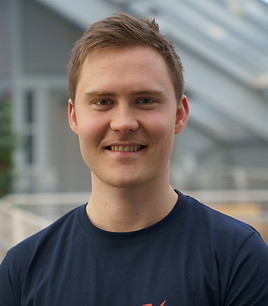
Team 2022
Team 2022

Team 2022 consists of 5 main groups with different areas of expertise; Mechanical, Electrical, Software, Marketing and The Board. The team is put together of 53 students from different fields of study across all years, including Cybernetics and Robotics, Electronics, Marine Technology and Mechanical Engineering.
Together, these students are improving the AUV from last year, Beluga, making it ready to compete in RoboSub 2022.
The Board
The Board is responsible for coordinating the project and securing a sustainable development of the organization. Their involvement ensures close cooperation between the respective group leaders, and the team’s overall progression, budget and wellbeing.

Marketing
The marketing group is responsible for promoting Vortex NTNU, both on campus and through different channels online. Their main goal is to increase the interest in the organization among students and businesses. They are also responsible for the website and working towards sponsors.

Mechanical
The mechanical group's main responsibilities include 3D modeling in CAD, and developing the AUV's and ASV's physical parts. In addition, they also work on replicating equipment and parts which are used in the RoboSub competition so that the AUV's abilities can be tested. Essentially, they combine fluid statics with bright solutions to develop a stable and safe vehicle which will perform to the best of its abilities.

Electronics
The electronics group is responsible for all the electronics on the AUV and the ASV, and thereby they work with PCB and circuit design, in addition to choosing the electronical components needed for the vehicles to function as desired. They are also in charge for developing a well-working power supply solution. Last but not least, they also work with signal processing and acoustics.

Benjaminas Visockis
Perception Lead
Software - Perception
The Software - Perception group is involved in all of the object recognition for the AUV. They use low-threshold recognition algorithms for color, shape and line recognition. They also work with state estimation, Sensor Fusion and pose-estimation, where mathematical formulations and algorithms are used to estimate positions, speeds and orientations of the drone and other objects underwater.

Tarek El-Agroudi
Autonomous Lead
Software - Autonomous systems
The Software - Autonomous group design, implement, test and tune controllers and path following algorithms for the drones, with the aim of making our AUV and ASV autonomous.
They gather input from the controller and various sensors placed on the drone and use state estimation and machine learning to generate new inputs that will control the drones autonomously.

Nicholas Bresina
Embedded Lead
Software - Embedded systems
The Software - Embedded group deal with mechanical waves in the water in the form of vibration and sound, which the aim of being able to locate objects subsea. One goal is to create an acoustic sampler that can convert analog signal to digital data, which can be used for multilateration.
Honorary members and mentors
Honorary members and mentors are non-active members who provide support for the project and the active members without any obligation.
Nils
Mentor








































